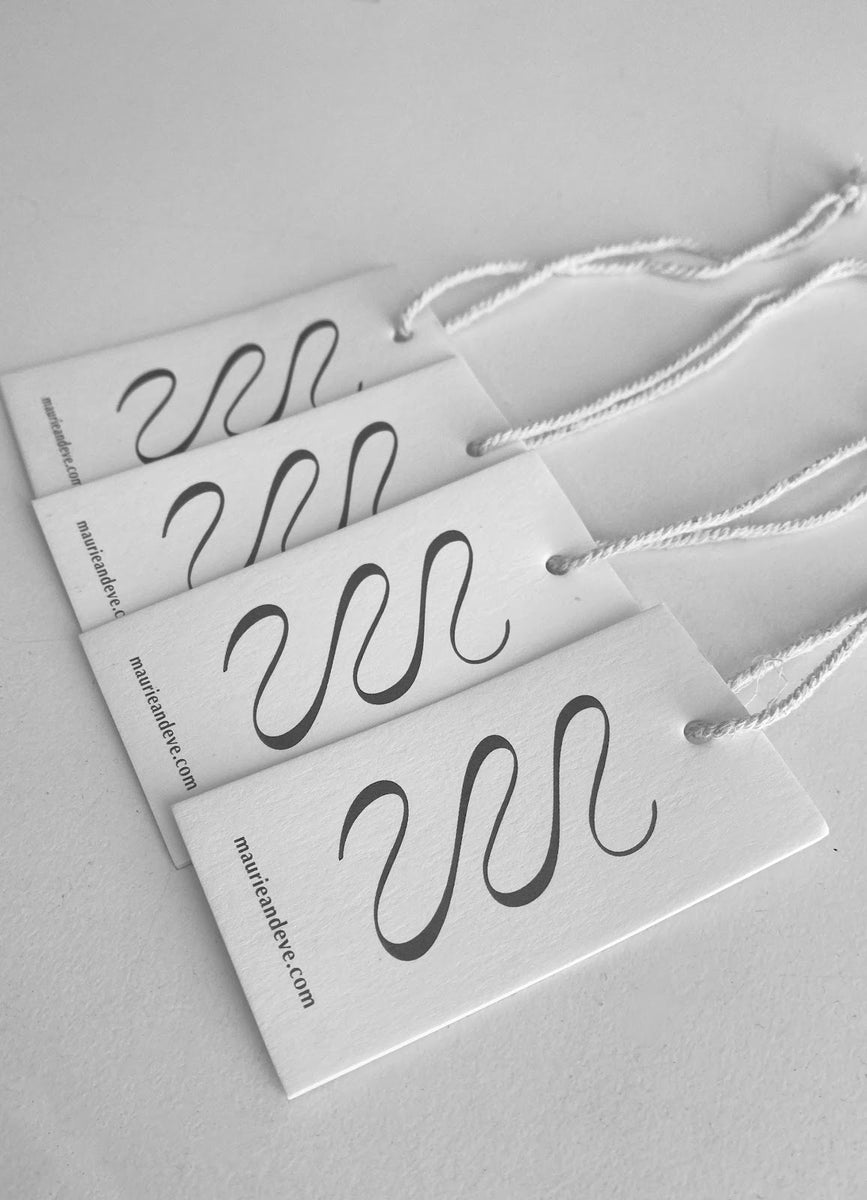
Why?
We make clothes that contribute to the global climate crisis. Making fabric costs the earth water and energy while repaying it with chemicals … finally landing in a mountain of waste. It’s an uncomfortable truth but a real one that we and every brand needs to face. In fact, the fashion industry produced 2.1 billion tons of GHG emissions in 2018, which is 4% of the global total. ‘Sustainable’ collaborations geared to drive sales and a blog on how to care for your garments simply won’t cut it. We need to do more. We need to understand the impacts our brand is having on the environment and activate strategies to reduce the consequences. We see ourselves as global custodians and hold ourselves accountable to take care of every environment we touch.

Design for timelessness
To be truly timeless, a garment must journey with its wearer unaffected by the passage of time. It should adapt with the individual’s body, style and mantra with no judgement - reassuring, always open to reinvention. An investment piece concerned not by seasons but sentimentality: Memories, nostalgia, adventure. The garment you reach for because it’s easy. Easy because it makes you feel good, even on the bad days. With each wear, it understands you a little bit more, falling and defining your shape - your story. This is what we strive to create. Garments you’ll love now and forever.
Wear, share, repair and repeat.
Our Best Fibres
The wholesome touch of clean white cotton, soft hug of knitting and nostalgic energy of crotchet. Fabrics are what we love. They bring us and our community joy. They also weigh heavily on the planet, and so sit as the cornerstone of our strategy to reduce environmental impact. Did you know of the sector’s GHG emissions, 38% is from material production and 33% is material processing? Choose low impact fibres … sounds simple, but it’s not. Dependent on where and how they are grown and processed, every fibre inflicts harm on Mother Earth. Having 100% transparency over this in a global supply chain is challenging. Which is why we (and many other brands) rely on fabric certifications to ensure those we use are the best available.
This is our Responsible Sourcing Matrix:
All time
Canopy Style Standard cellulose (audited to score of 20-25)
Recylced (GRS) Cotton
Regenerative Cotton
Organic (GOTS) Cotton
Organic (GOTS) Linen
Responsible (RWS) wool
Hemp
Good
BCI Cotton
Organic Cotton (OCS)
Linen
LWG Leather
Responsible (RDS) Down
New Merino Wool
Peace silk
Recycled (RCS) Cotton
Recycled (GRS) Synthetic
Recycled (OCS) Synthetic
Transitional cotton
Good Earth Cotton
Rafia
Authentico Wool
Phase out
Blend Natural/ Conventional Cellulose
Blend Natural/ Conventional Synthetic
Conventional cellulose
Conventional cotton
Conventional rayon
Conventional silk
Conventional synthetic
Conventional wool
Do not use
Angora
Fur
Conventional leather
Exotic animal skin
Mohair
PVC
KEY FABRICS
Better Cotton Initiative – BCI
Global Organic Textile Standard – GOTS
Global Recycled Standard – GRS
Leather Working Group – LWG
Organica – Org
Responsible Wool Standard – RWS
Recycled Content Standard – RCS
Organic Content Standard – OCS
In our endeavor of truth, gaps in the certification chain are inevitable. Not all suppliers are certified across every standard, and like any hierarchy in nature, this affects the remainder of the upstream chain. The end result? A garment that cannot be claimed as organic. We also need to be mindful of the living and trading environments of our global citizens. It is not realistic for a small operation in Bali to meet certification across a dozen standards – this is expensive, and Indonesia is a third world country. So, if a partner can provide necessary evidence proving their fibre is from a certified source, then we deem it to be responsible. Further to this we work with our extended families to explore realistic options to gain their own certification. Everyone wins.
The word certification is used a lot in this space … but actually, they’re not the holy grail of conscious apparel. There is no data attached. Why do we want data? To really drill down into the effects of our direct supply chain, and this is what we are on a mission to fully understand. To do this we are working with a range of partners and consultants to access the latest research and science to know more and change more.
Here, we look at the entire lifecycle of a natural versus synthetic fibre. We’re not into plastics and expect a garment to be biodegradable. We like our fabric natural, and here’s why.

Cotton
The most abundantly produced natural fibre in the world, cotton weighs heavily on the world with a thirst for pesticides, fertilisers and water. Cotton is also our preferred fibre across all ranges, and so we source what we need through our responsible fibre matrix for significantly less impact.

Organic
Organic cotton is grown from non-GM seeds and doesn’t use any synthetic fertilisers or pesticides. It has positive impacts for soil, biodiversity, farmers and local communities.

From the trees
Is there anything a tree can’t do? Our Viscose and Rayon are cellulose fibres made from wood pulp. A natural, renewable resource, trees play a key role in the climate crisis by sequesting carbon - and lots of it! So, ensuring pulp is derived from a sustainable source is paramount. Unfortunately, most is taken from ancient and endangered forests whose removal is exponentially contributing to climate change. As such, we don’t use a huge amount of cellulose, but when we do, we source based on the CanopyStyle audits - the global leaders in everything to do with forests.

Linen
Linen comes from the flax plant which is naturally resilient. It can be grown in poor soils and requires minimal water and use of chemical inputs. Its resilience translates directly into a garment’s quality and speaks effortlessly to our concept of timelessness. We deem any linen to be responsible, however continue to explore the possibility of more organic and regenerative linen.

Hemp
A natural beauty who was born responsible. Hemp requires minimal water and fertiliser and is one of the strongest, longest living fibres we use. What’s more, it is has positive soil, erosion and biodiversity results with one of the lowest environmental impacts. We deem all hemp to be responsible, and with a lack of global standards, are searching to partner directly with a farm to explore the concept of regenerative hemp. Watch this space.


Not So Natural
Within some of our collections are synthetics. They produce carbon and are made from non-renewable fossil fuels and are therefore the worst kind for Mother Earth. Synthetics take approximately 200 years to decompose … if this doesn’t send a shudder down your spine, we’re not sure what will. Like the rest of the sector, we are preferring recycled to lower our impact. And whilst stories of circularity, fishing nets and plastic bottles are great, we need to make a few things clear. Firstly, next to zero recycled garments are fed back into a circular system whereby they are recycled again. There is a lot of talk about a fabric’s ability to do so, but it is not the reality … they go to landfill, so we – our children, their children and so on - are faced with the 200-year problem. Secondly all synthetics release microplastics into our waterways. No-one wants plastic in the ocean and pushing individuals to wash everything in a guppy bag isn’t the solution either. Which brings us back to our love of the natural. We will be sourcing responsible synthetics where we need, simultaneously looking at ways to decrease them across our collections.
Packaging is painful. Its lifespan is short with just one purpose before being classified waste. We resist the urge to over-compensate for an amplified customer experience, rather opting for recycled, compostable materials we hope make an even bigger impact than synthetic ribbon and coloured tissue.

Packaging is an important part of being our best, so here’s how we do it:
GARMENT SWING TAGS
Made from 100% recycled carboard and recyclable.
GARMENT BAGS
We use 100% compostable (industrial) bags. Compostable packaging is made of raw materials (e.g. corn starch) known to naturally decompose in microbe and oxygen-rich environments (just like organic waste). So, not only does our packaging bypass landfill, but when turned into compost, helps to fertilize plants and vegetation. To efficiently decompose, bags must be composted in industrial facilities (at higher temperatures), so take note to place yours in the correct council bin.
Why not biodegradable? In the world of plastic packaging, the word biodegradable indicates additives were used for rapid disintegration in landfill or nature. So, not ideal.
TISSUE PAPER
If tissue paper arrives with your order, its composed from either 100% recycled or 100% FSC certified paper.
POST BAGS
We only use certified home compostable (AS5810/ AS4736) bags, so they can be added to any home compost and degrade in 3 - 6 months. They are also designed to be repurposed as a carry bag.
STICKERS
All stickers are FSC certified and manufactured to an ISO14001 Environmental Management System. Adhesive is water soluble and complies with EN 13428. So essentially, our stickers are the most environmentally friendly option in the Australian market.










